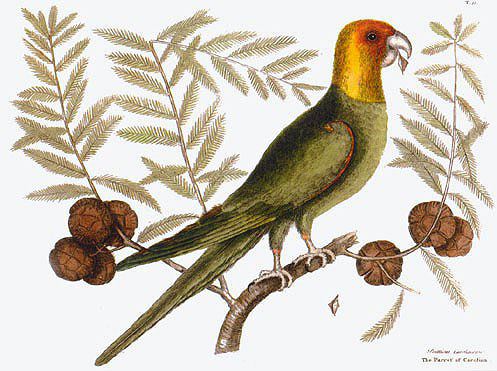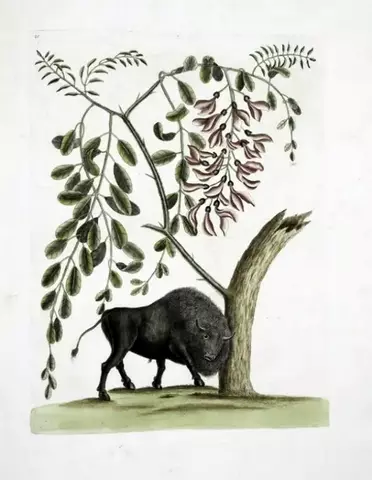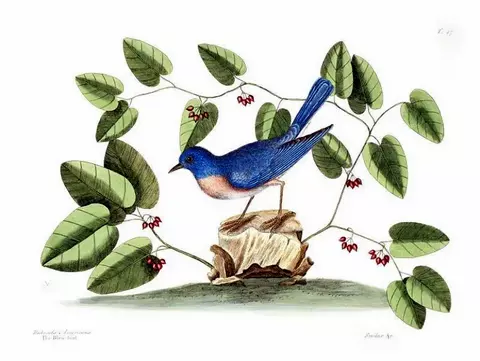CATESBY, Mark
Mark Catesby was born on 24 March 1682/83 and baptised at Castle Hedingham, Essex, fifth son of John Catesby, a lawyer and gentleman farmer, and his wife Elizabeth née Jekyll, of a prosperous family of Hedingham Castle, and the family owned a farm and house ‘Hollgate’, in Sudbury, Suffolk. Mark's formal education was limited and during his youth he became acquainted with the pre-eminent naturalist John Ray (1627-1705), who lived nearby. His father John died in 1705, leaving Mark with a small inheritance and, with limited prospects in England, Mark set sail for the New World. In 1712 he made his first voyage to the then American colonies, visiting his sister Elizabeth Cocke, in Northumberland, Virginia, who had married the secretary to the Governor of Virginia, Dr William Cocke (1672–1720), who provided Catesby with introductions to prominent Americans of the time. During this visit he shipped specimens to naturalists Samuel Dale (1659-1739) and Thomas Fairchild (1667-1729), these efforts later gained him entré to important English sponsors. Except for a visit to the West Indies in 1714, he confined his travels to Virginia between the tidewaters and the Appalachian Mountains, bringing back images of flora and fauna never seen in this country and for which he is best known in illustrating. He returned to England in 1719, returning to the Americas again in 1722 and, unlike his first visit, Catesby set out at this time to illustrate all the plants, animals, birds, fish and reptiles of the then American Colonies, creating a collection of drawings and watercolour paintings. In 1726, he returned to England and, funded by the sale of his family’s Sudbury properties, made extended visits to Virginia, Carolina and Florida compiling the first comprehensive survey of this part of America entitled 'The Natural history of Carolina, Florida and the Bahama Islands'. As the first coloured plate book of American flora/fauna, it represented a dramatic first in American natural history and a serious contribution to the natural sciences of the eighteenth century. This work consumed the next twenty years of his life and without large sums at his command, to produce this volume, Catesby studied with the French watercolourist Joseph Goupy (1689-1769), from whom he learned the technique of etching copper plates. In February 1733, elected a Fellow of the Royal Society. In 1768 King George III purchased Catesby’s original watercolours for the 'Natural History' paying the handsome sum of 120 pounds for three bound volumes in leather, which have remained in the Royal Collection. John Catesby was buried on 23 December 1749.
Works by This Artist

|
Carolina Parakeets: Conuropsis carolinensis |

|
Bison Americanus: Pseudo AcaciaPrint
|

|
The Eastern Bluebird: siala sialis |